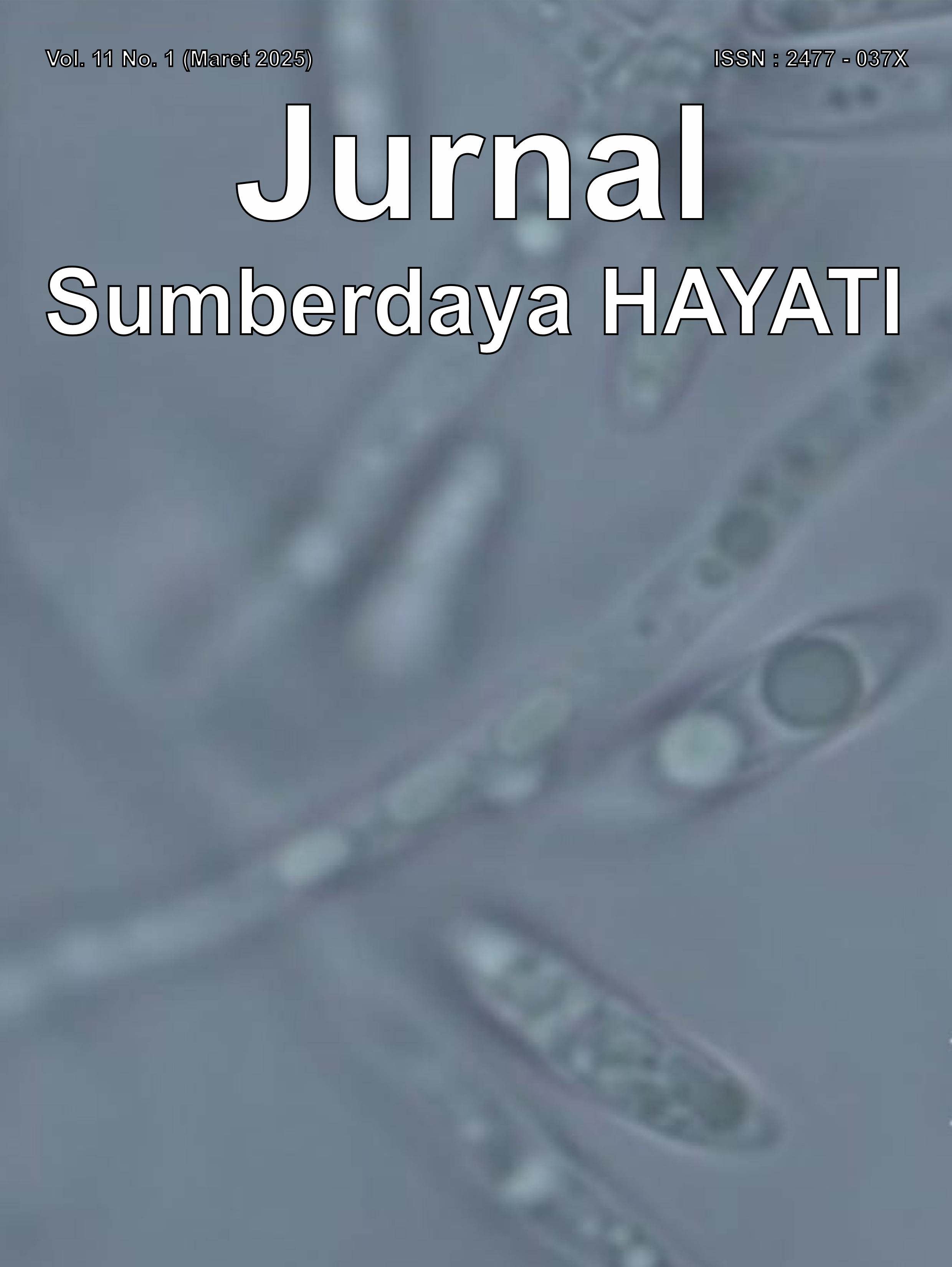Produksi Asam Asetat dari Pulp Kopi Robusta Menggunakan Saccharomyces cerevisiae dan Acetobacter aceti
Acetic Acid Production from Robusta Coffee Pulp using Saccharomyces cerevisiae and Acetobacter aceti
Abstract
The type of coffee commonly grown by Indonesian farmers is robusta coffee (Coffea robusta). The processing of robusta coffee has so far focused on producing coffee beans with good flavor, leaving behind coffee pulp waste that needs to be utilized. This study aims to utilize coffee pulp waste to produce vinegar through a fermentation process using Saccharomyces cerevisiae and Acetobacter aceti. Vinegar production begins by rejuvenating A. aceti in YPG media and creating a growth curve. The fermentation of coffee pulp into vinegar involves two fermentation stages: alcoholic fermentation and acetic acid fermentation. Observation of the culture at the end of fermentation includes pH value, total acetic acid content, sugar content, and substrate utilization efficiency in product formation. The growth curve of A. aceti reaches the log phase at the 6th to 8th hour with a µmax of 0.45 hours-1. Vinegar from coffee pulp has the highest total acetic acid in 10 days of alcoholic fermentation and 7 days of acetic acid fermentation, which is 2.37%, with a pH value of 3.02, a Yp/s value of 0.995, and a ∆S/S value of 0.69. The amount of acetic acid obtained does not fulfill the requirements of SNI 01-4371-1996.
Downloads
Copyright (c) 2025 Siti Mutia Zahrani, Titi Candra Sunarti, Anja Meryandini

This work is licensed under a Creative Commons Attribution 4.0 International License.
Authors who submit and publish with this journal agree to the following terms:
1. Authors retain copyright and grant the journal/publisher non exclusive publishing rights with the work simultaneously licensed under a Creative Commons Attribution 4.0 International License.
![]()













